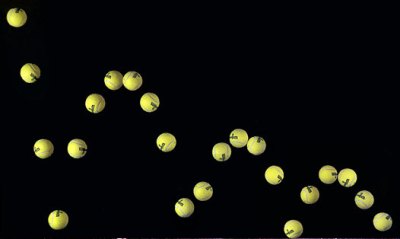Most project management people use the project schedule as a static tool. They look at the latest update, consider the latest network of tasks and available floats. Rarely if ever do they refer to previous updates to check how things have been changing – and even more rarely in any kind of systematic way. This is a pity as there is much more meaningful information available from the same data by moving to a dynamic vision – and it’s quite simple and easy to do! Our new White Paper “From a Static to a Dynamic Vision of Project Schedules: Why Conventional Usage of Schedules is a Real Waste of Time and Resources Compared to the Value it Easily Could Provide” [2012-26] provides useful insights of how to simply benefit from a dynamic view.

How successive snapshots can give a good idea of the trajectory…What do you wait for for applying this principle to your project schedule?
A project is a dynamic endeavor in multiple dimensions. Static scheduling is exactly like if we tried to apprehend the dynamics of a bouncing ball with regular snapshots – and just looking at one snapshot only. This is a highly limited view – we can probably measure the distance to the goal but we have no information whatsoever about how the ball is evolving dynamically in space.
What can we infer from a series of snapshots compared to just looking at one snapshot? We can have much more information: we can measure not only a position in space, but also speed, rotation, and all sorts of dynamic parameters. We can get a much better understanding of the forces at play and how they interact.
By knowing such dynamic parameters like speed, we can extrapolate the system dynamics into the future with a good confidence and thus, anticipate reaching our goal and identify potential problems.
Measuring dynamic parameters provides much richer understanding of the actual situation.
Not only is it possible to have this dynamic information, but it is already available in the project systems. And it is not used! What a waste of time and effort collecting progress information and not using it!
Maximize the usage of the tedious but necessary process of getting information to update the schedule – spend more time (in proportion) making sense of it for the sake of sound decision-making and anticipation!
Read our new White Paper “From a Static to a Dynamic Vision of Project Schedules: Why Conventional Usage of Schedules is a Real Waste of Time and Resources Compared to the Value it Easily Could Provide” [2012-26], which gives some straightforward hints as to how to extract much more value from the information already available. Grab the opportunity – become dynamic schedule readers, and anticipate problems before they are apparent in the static view of the project!

